
In the face of urbanization and climate change, the importance of basic infrastructure, particularly stormwater drainage infrastructure, cannot be overstated. A well-designed and maintained stormwater drainage system is essential for the safety, health and property. In this article, we will explore the importance of efficient stormwater drainage systems, the benefits of using sustainable materials and the future of stormwater management infrastructure.
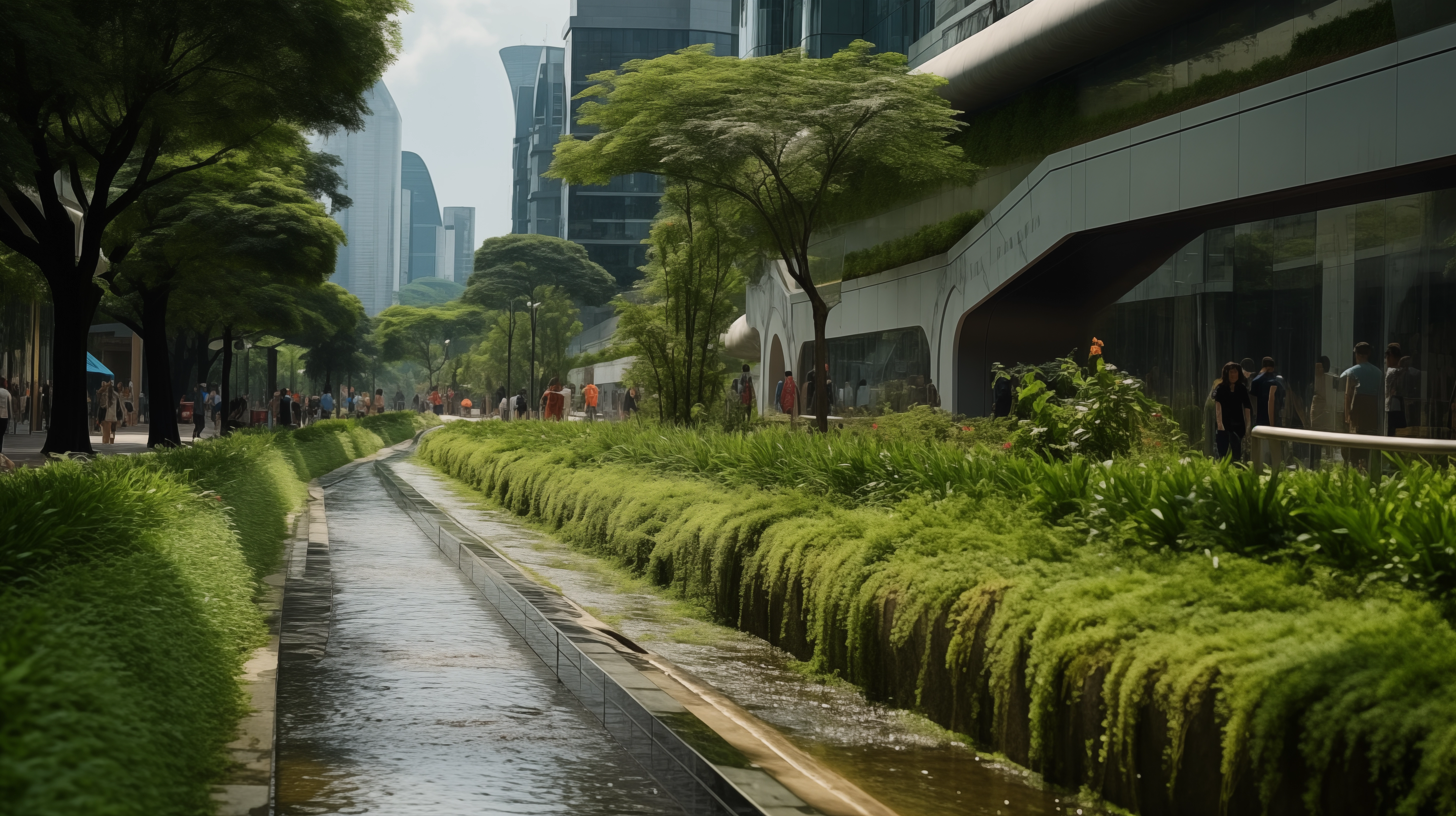
An urban scene after a light rainfall, showcasing effective stormwater drainage into a canal. The image highlights clean, organized streets with visible drains and green spaces, reflecting a commitment to sustainable urban planning.
The Importance of an Efficient Stormwater Drainage System
Well-designed stormwater drainage infrastructure is crucial for several reasons:
- Flood prevention: Well-functioning stormwater drainage systems quickly and effectively channel water away from buildings, roads and public spaces, minimizing flooding risks and protecting property from damage.
- Public health: Proper drainage reduces the risk of waterborne diseases by preventing stagnant water from accumulating, which can serve as breeding grounds for mosquitoes and other disease-carrying insects. By maintaining a clean and dry environment, a well-designed drainage system contributes to the overall health and well-being of the community.
- Environmental Protection: Efficient stormwater management reduces pollution by preventing contaminated runoff from entering water bodies, thus protecting aquatic ecosystems and water quality.
- Community Safety: Effective stormwater management enhances community safety by reducing the risk of accidents, injuries and fatalities caused by flooding and water-related hazards.
- Infrastructure Protection: A robust stormwater drainage system helps protect other critical infrastructure, such as roads, bridges and utilities, from damage caused by excessive water flow and corrosion.
- Aesthetics and livability: A well-designed and maintained drainage system can enhance the aesthetic appeal of streets and public spaces, contributing to a more livable and attractive urban environment.
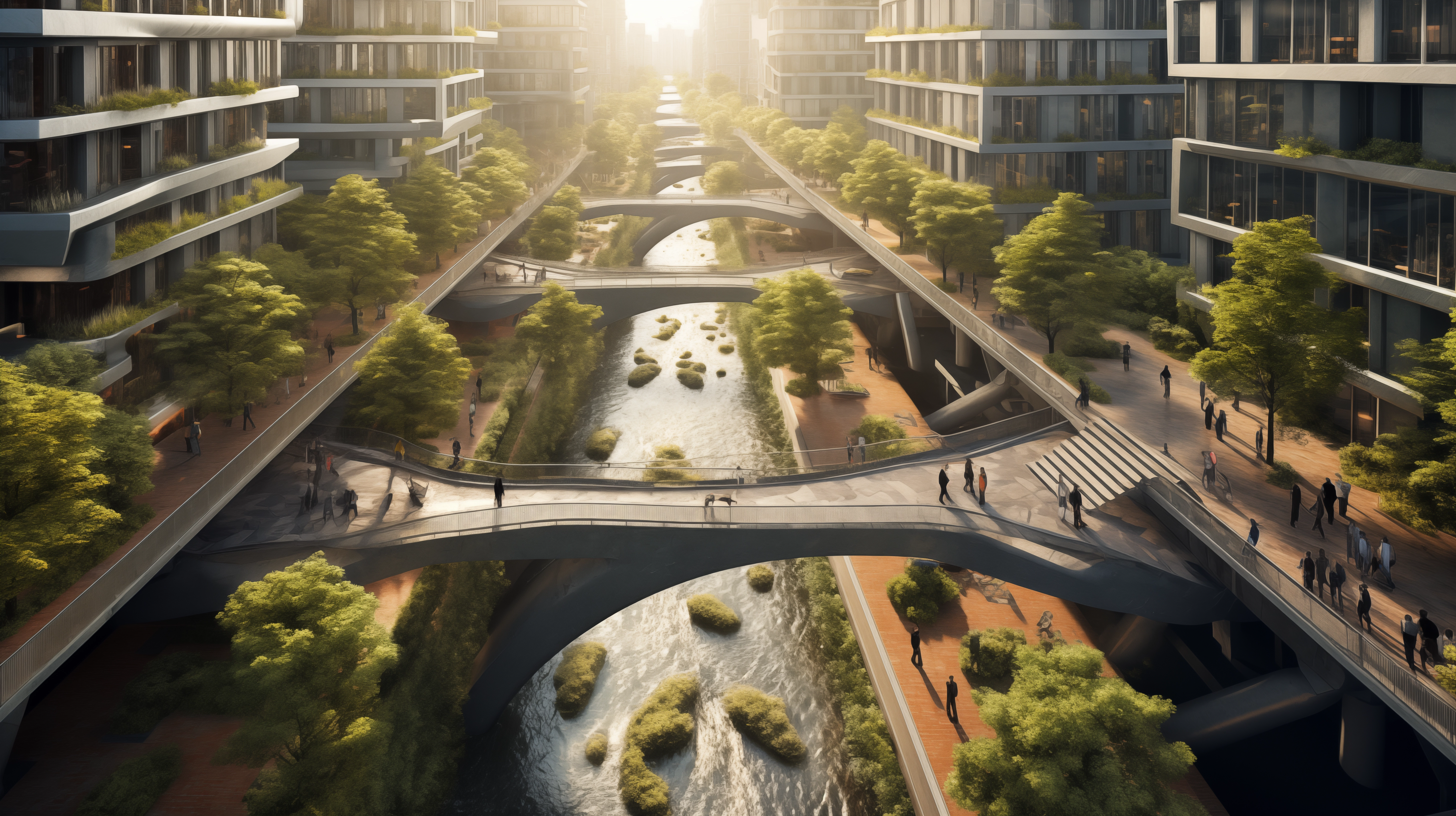 Stormwater drainage infrastructure efficiently manages heavy rainfall, preventing flooding and maintaining safe, organized urban spaces. This system highlights the importance of resilient infrastructure in adapting to climate change.
Stormwater drainage infrastructure efficiently manages heavy rainfall, preventing flooding and maintaining safe, organized urban spaces. This system highlights the importance of resilient infrastructure in adapting to climate change.
- Climate change adaptation: As the frequency and intensity of extreme weather events increase due to climate change, even well-designed cities like Dubai experienced unprecedented torrential rainfall in 2024 that strained their drainage infrastructure. Efficient stormwater drainage infrastructure is even more critical in building resilient cities that can withstand the challenges posed by heavy rainfall and rising sea levels.
The Cost of Effective Stormwater Drainage Infrastructure
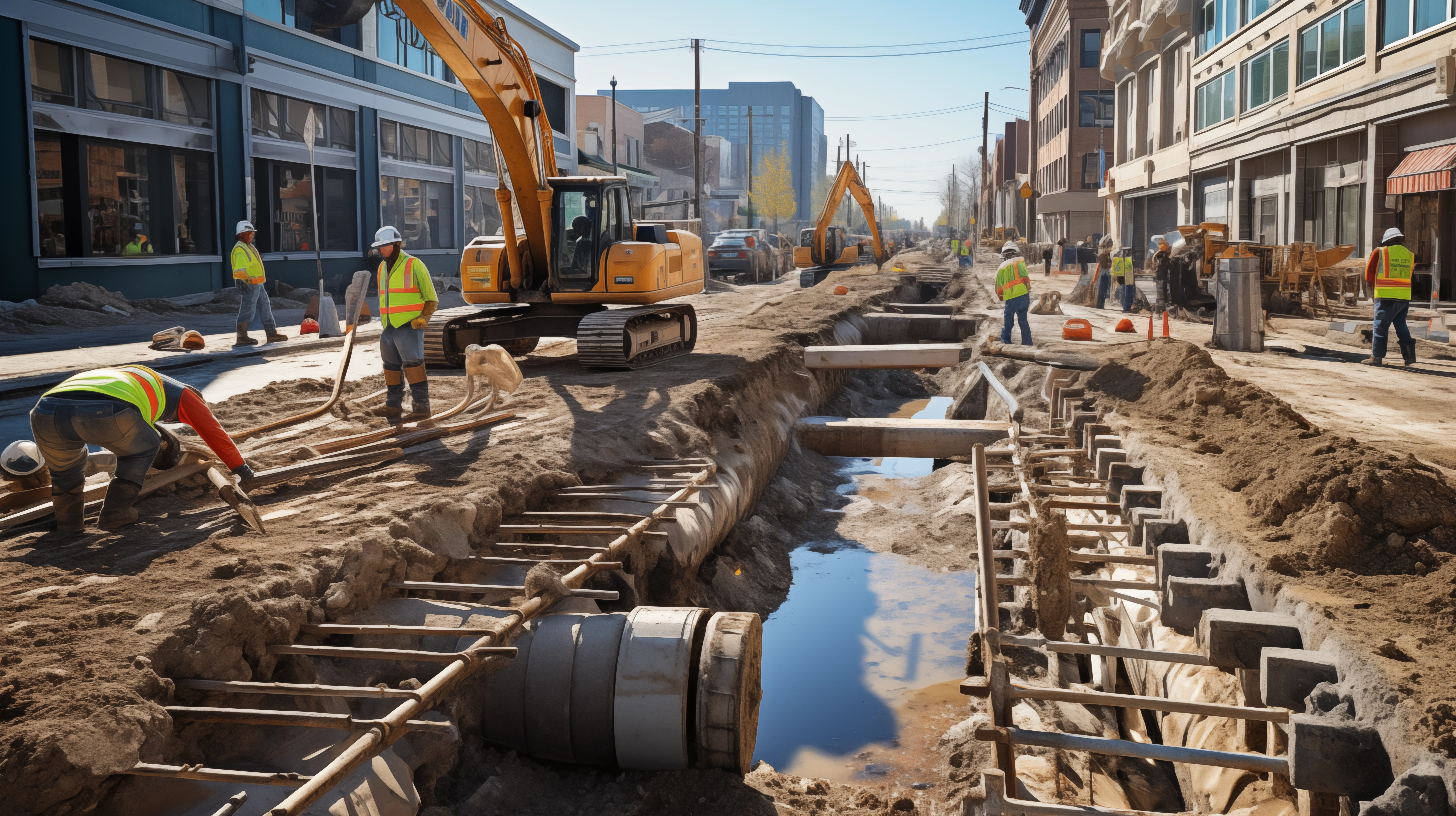 Workers install reinforced stone grates and lay pipes at an urban construction site, highlighting the detailed work and significant costs involved in developing efficient stormwater drainage systems. This infrastructure is crucial for urban sustainability and resilience.
Workers install reinforced stone grates and lay pipes at an urban construction site, highlighting the detailed work and significant costs involved in developing efficient stormwater drainage systems. This infrastructure is crucial for urban sustainability and resilience.
Developing stormwater infrastructure requires significant upfront costs. Some of the costs associated with stormwater drainage infrastructure include:
- Planning and design: Developing a comprehensive stormwater management plan requires the expertise of engineers, hydrologists and urban planners, which can be costly.
- Construction and installation: Building a drainage system involves excavation, laying pipes, installing catch basins and maintenance holes and constructing other infrastructure components, all of which come with substantial costs.
- Materials: The cost of materials, such as pipe, grates and other components, can be significant, especially when using high-quality, durable and sustainable options.
- Maintenance and repairs: Regular maintenance, such as cleaning catch basins, repairing damaged infrastructure and replacing worn components, is essential for ensuring the drainage system's long-term performance but also comes with ongoing costs.
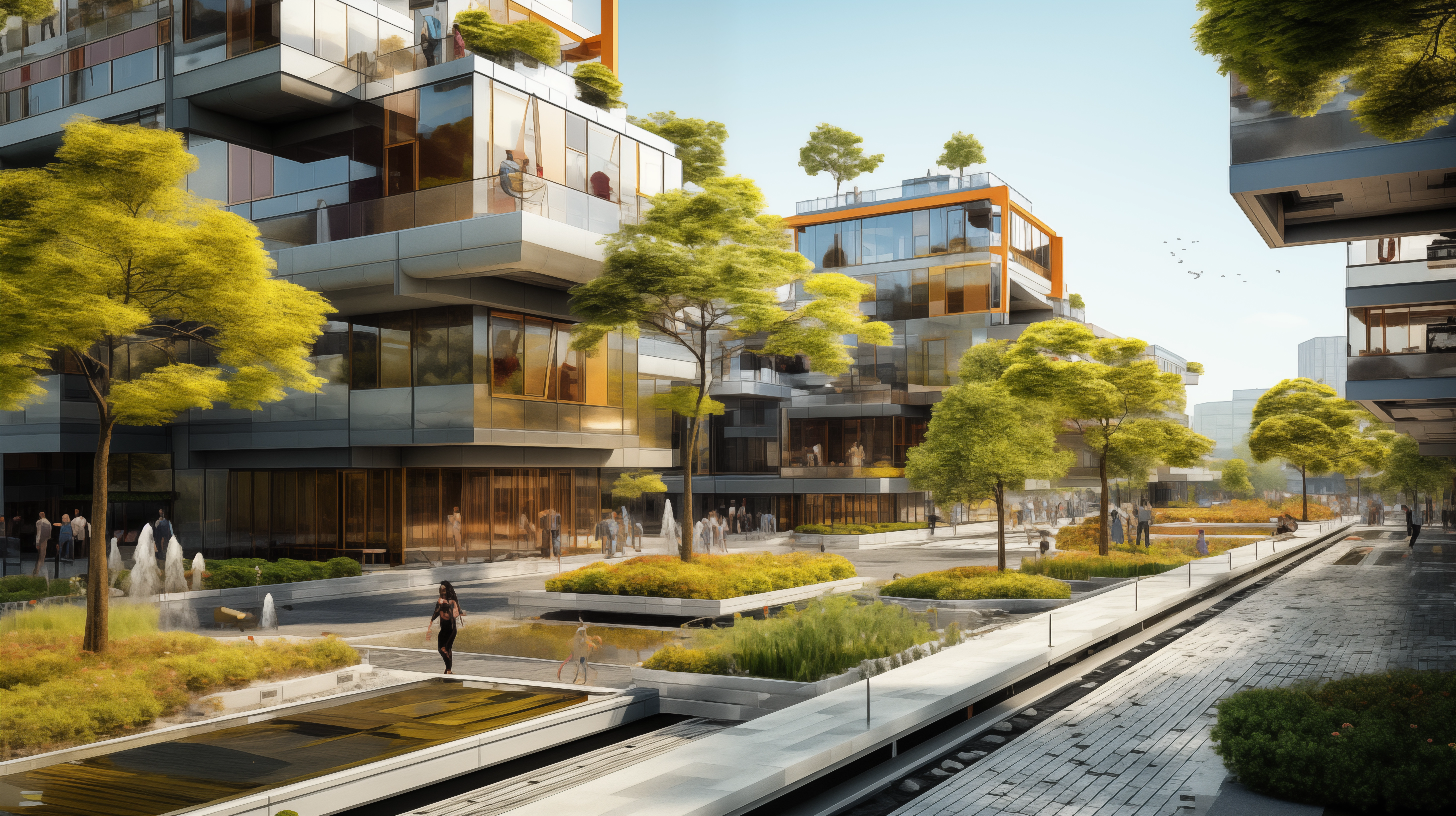 A well-designed stormwater drainage system in a clean, organized urban area promotes a safe and healthy environment. Efficient infrastructure supports green spaces and modern buildings, reflecting the long-term benefits of reduced flood damage and environmental protection.
A well-designed stormwater drainage system in a clean, organized urban area promotes a safe and healthy environment. Efficient infrastructure supports green spaces and modern buildings, reflecting the long-term benefits of reduced flood damage and environmental protection.
Despite these costs, investing in adequate stormwater drainage infrastructure yields numerous long-term benefits. A well-designed and maintained city stormwater drainage system can:
- Reduce the risk of costly flood damage to buildings, roads and other infrastructure.
- Lower health care costs by preventing the spread of waterborne diseases.
- Minimize environmental cleanup costs by preventing pollution.
- Ensure resident safety and access to public spaces during heavy rainfall events.
- Prevent the contamination of groundwater and surface water sources, ensuring a safe water supply for the community.
- Preserve water quality and support the health of local flora and fauna.
The Importance of Drainage System Maintenance
 Maintenance workers inspect and clean a stormwater drain grate, ensuring the efficiency and longevity of the drainage system. Regular maintenance is crucial for preventing flooding and maintaining clean urban environments.
Maintenance workers inspect and clean a stormwater drain grate, ensuring the efficiency and longevity of the drainage system. Regular maintenance is crucial for preventing flooding and maintaining clean urban environments.
Regular maintenance is crucial for ensuring the longevity and performance of stormwater drainage infrastructure. Some critical aspects of drainage system maintenance include:
- Inspection: Regular inspections help identify potential issues, such as blockages, cracks or corrosion, before they lead to more serious problems.
- Cleaning: Removing debris, sediment and other obstructions from catch basins, pipes and other components is essential for maintaining proper water flow and preventing backups.
- Repair: Promptly addressing damaged or worn infrastructure components helps prevent more extensive and costly repairs down the line.
- Upgrades: As urban areas grow and develop, drainage systems may need to be upgraded or optimized to accommodate increased water volumes and changing land use patterns.
By prioritizing drainage systems maintenance, cities can extend the life span of their infrastructure, reduce the risk of failures and flooding and ensure the continued effectiveness of their stormwater management efforts.
The Benefits of Using Sustainable Materials in Drainage Solutions
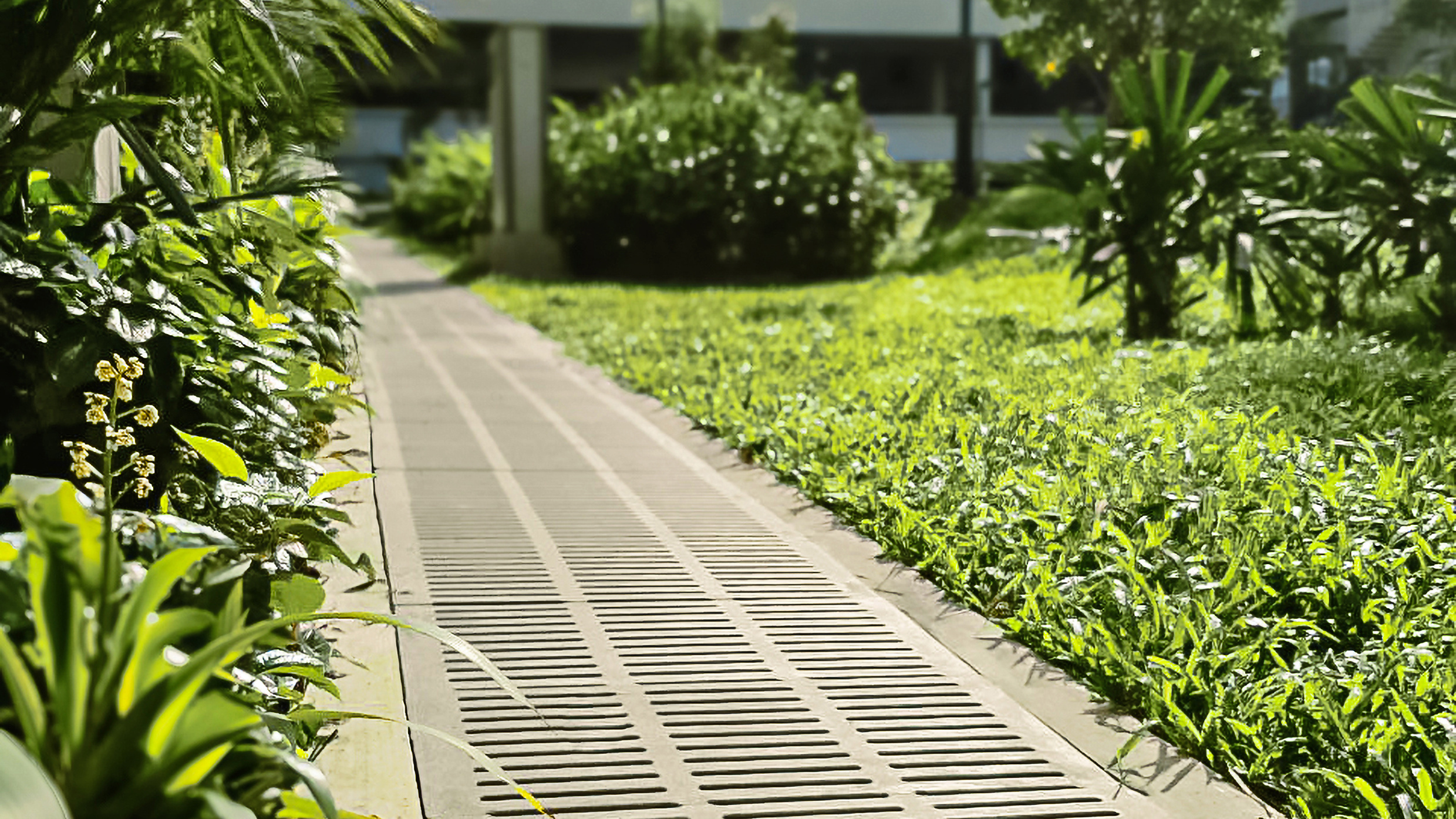 Jonite trench grates provide an eco-friendly and durable solution for urban drainage. Made from sustainable materials, these grates blend seamlessly with the environment while effectively managing stormwater.
Jonite trench grates provide an eco-friendly and durable solution for urban drainage. Made from sustainable materials, these grates blend seamlessly with the environment while effectively managing stormwater.
Incorporating sustainable materials, like Jonite’s reinforced stone grates, into stormwater drainage infrastructure offers numerous benefits:
- Durability: Sustainable materials are designed to withstand harsh weather conditions, heavy traffic and other wear and tear, extending the life span of infrastructure components and reducing maintenance needs.
- Public safety: Many sustainable materials, such as Jonite’s slip-resistant grates, are designed with public safety in mind, reducing the risk of accidents and injuries in wet conditions.
- Environmental friendliness: Using sustainable materials with lower carbon footprints and minimal ecological impact helps cities and buildings reduce their overall environmental burden and contribute to global sustainability efforts.
- Aesthetic appeal: Sustainable materials like reinforced stone grates can blend seamlessly with urban landscapes, enhancing the visual appeal of streets and public spaces while still providing essential drainage functions.
- Cost-effectiveness: While sustainable materials may have higher upfront costs, their durability and low maintenance requirements often lead to long-term cost savings for cities.
The Future of Stormwater Management Infrastructure
As cities face the challenges of urbanization and climate change, the future of city stormwater drainage infrastructure will rely heavily on innovative technologies and sustainable practices. Some emerging trends and solutions include:
- Green infrastructure: Incorporating natural elements such as permeable pavements, biorentention systems and green roofs into urban landscapes can help absorb and filter stormwater, reducing the burden on traditional city drainage systems.
- Smart technologies: Real-time monitoring systems, sensors and data analytics can help cities optimize drainage systems, detect issues promptly and respond quickly to potential problems.
- Low-impact development: Designing new developments with stormwater management in mind by using techniques like minimizing impervious surfaces and preserving natural drainage patterns can help reduce runoff and improve water quality.
- Resilient design: Incorporating flood-resistant materials, elevated structures and other resilient design features can help cities better withstand the impacts of extreme weather events and rising sea levels.
- Integrated planning: Collaborating across sectors, such as transportation, land use and public health, can lead to more comprehensive and effective stormwater management strategies that simultaneously address multiple urban challenges.
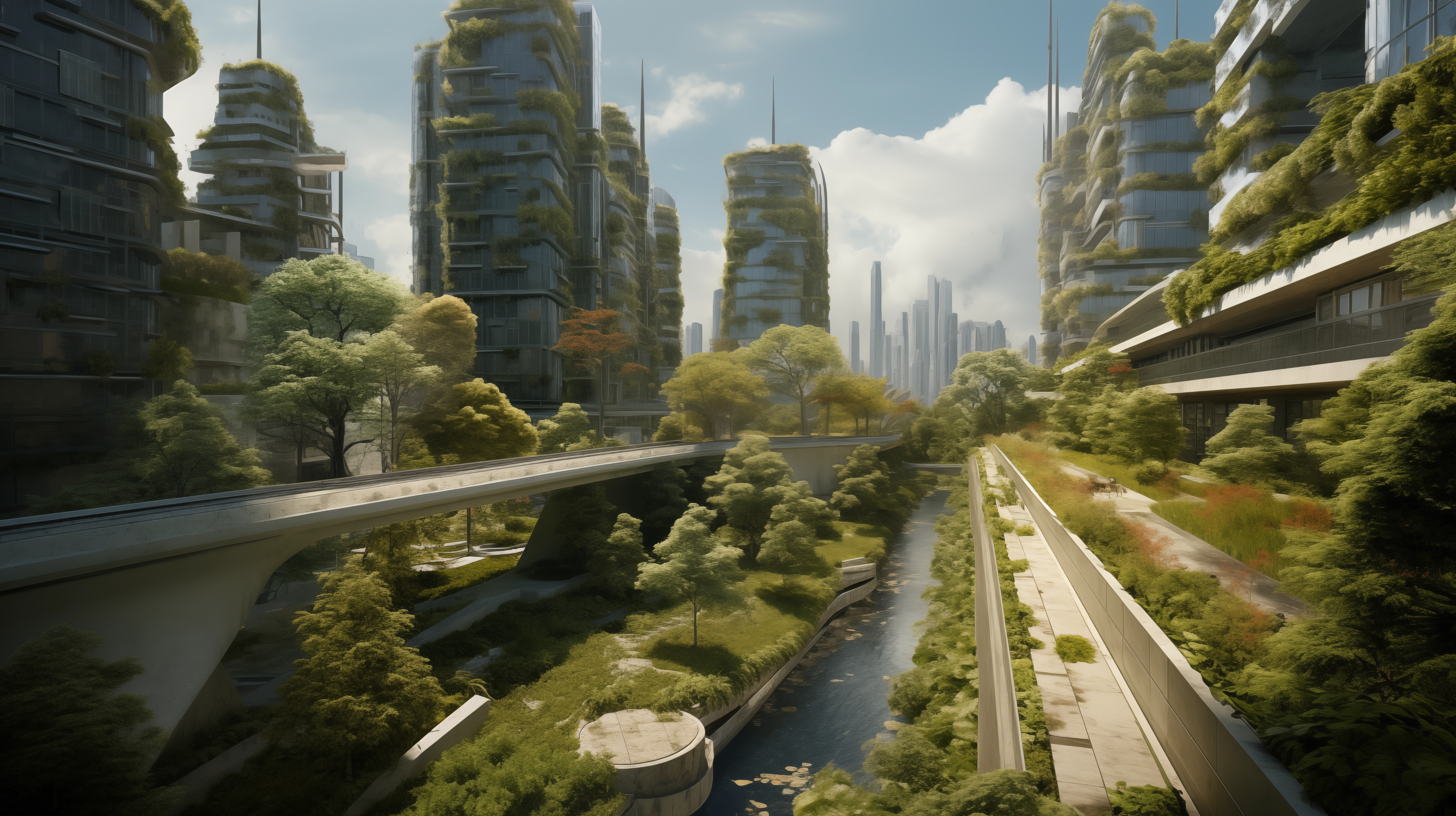 A futuristic cityscape showcasing sustainable drainage solutions, featuring modern high-rise buildings with green roofs, permeable pavements, rain gardens, and bioswales. This design highlights advanced urban planning for effective rainwater management and environmental protection.
A futuristic cityscape showcasing sustainable drainage solutions, featuring modern high-rise buildings with green roofs, permeable pavements, rain gardens, and bioswales. This design highlights advanced urban planning for effective rainwater management and environmental protection.
Final Thoughts
An efficient and well-maintained drainage system is essential for the sustainable development of our cities, from protecting public health and safety to preserving the environment. By embracing new technologies, sustainable materials and integrated planning approaches, cities can create drainage infrastructure that serves today’s needs and lay the foundation for a more sustainable and livable urban future.
At Jonite, we are committed to supporting communities in their efforts to build better stormwater management infrastructure. Our range of sustainable and durable products, including trench grates, storm grates and tree gates, is designed to provide high-performance drainage solutions while enhancing the aesthetic appeal of urban spaces. Contact us today to learn how Jonite can help your community create a more sustainable and resilient future.









